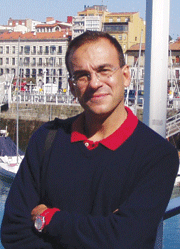E-Archive
Shot Peening in the Automotive Industry
in Vol. 19 - July Issue - Year 2018
Shot Peening and Industrial Design

Mario Guagliano
I was recently invited to visit a factory of a well-known company that produces domestic appliances. It is probable that at home you have one washing machine or one fridge with this brand. I had a technical discussion with the designers and we touched on many points and many aspects related to the design and the production of these products. I was not surprised hearing that in the design process, from the concept to the engineering, what the most important issue (apart from the cost) is, is the so called "emotional design", that can be defined as the feeling a product generates when we look at it. And if the feeling is positive, the potential customer will be attracted and will possibly buy that appliance. Well done! And to generate vibrations, possibly "good vibrations" (as the Beach Boys say..!), it is necessary to be dynamic and to renew continuously the aspect of the product, before the customers become bored.
This is a technological issue, since this is a driving force toward the development of new processes to change the surface aspect of the product, as processes to metallize a plastic surface; this is a continuous challenge.
Well, during the discussion, the engineers told me that they are interested in trying shot peening, not to improve the fatigue strength of some part of the product but just to create an attractive and unusual surface aspect. Shot peening is able to change the surface finishing of the treated part in a controlled way: after shot peening, the surface is rough but is regular, and the roughness can be controlled and tuned by changing the main shot peening parameters (the media, the Almen intensity, the coverage,..). This make shot peening particularly attractive as a potential process also for metallized parts.
At that point, it was natural for me to try to extrapolate this concept to the automotive field. Imagine that shot peening is applied not only to crankshafts, conrods, gears, springs, and other possible mechanical components but also to the body of the car! For sure, not to improve the fatigue strength of the body of the car (!!), just to change the aspect of the car, so as to have an "emotional effect". Imagine a car like that. Would people like that? I do not know, but I think that it would not go unnoticed. And many possible different versions could be developed: just the doors or the hood could be peened to make the body even more attractive. The effect could be quite unexpected in terms of touch and in terms of lightness.
Perhaps not for really large mass-production cars, since it adds cost and production time, but it could be suitable and attractive for special series (let me say, there are so many strange cars on the road that that would not be the strangest one). It is true that the process should be completely re-defined, with new parameters and different media, but it is also true that it could open new markets for shot peening. And once the designers are confident with the treatment, there could be many other applications like this just ready and waiting to start.
Indeed, I do not know if a scenario like this can work and if shot peening applied to the body of cars could be a successful choice. However, I think that shot peening has still many potential new applications and not all are based on the need to improve the mechanical performances of the treated parts.
Due to the richness of materials and components and to the many different functions that a car must provide, the automotive industry is the ideal place to put engineers and designers in touch and to experiment with new and unusual applications. That is to say, that the cooperation between different technical subjects and specialists (Designers & Engineers) can pave the way toward exciting and never-before-tried applications of this still-young treatment.
Why not?
Shot Peening in the Automotive Industry
by Mario Guagliano
Contributing Editor MFN and
Full Professor of Technical University of Milan
20156 Milan, Italy
E-mail: mario@mfn.li



























